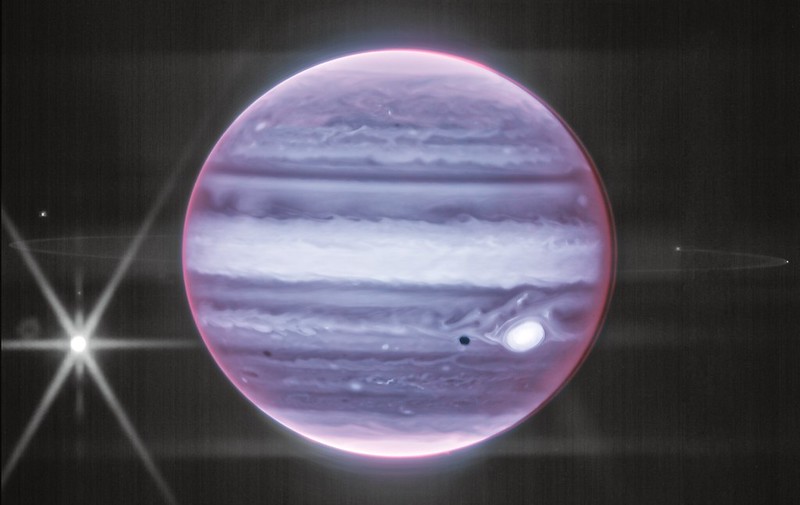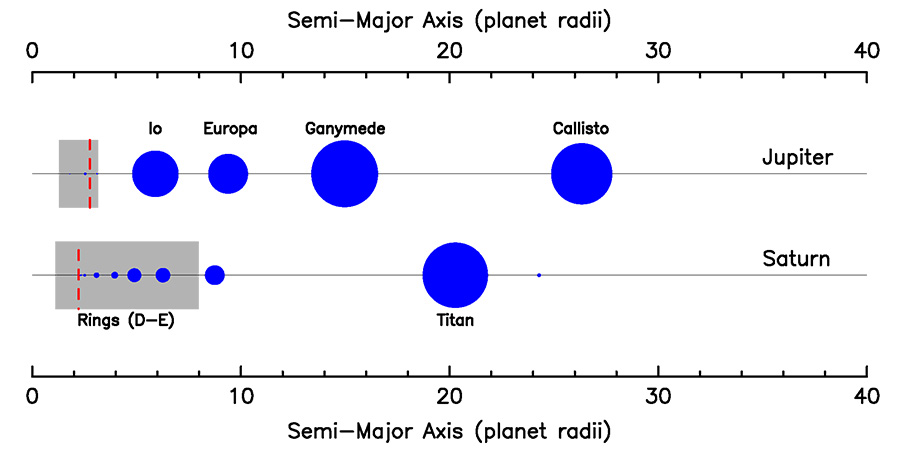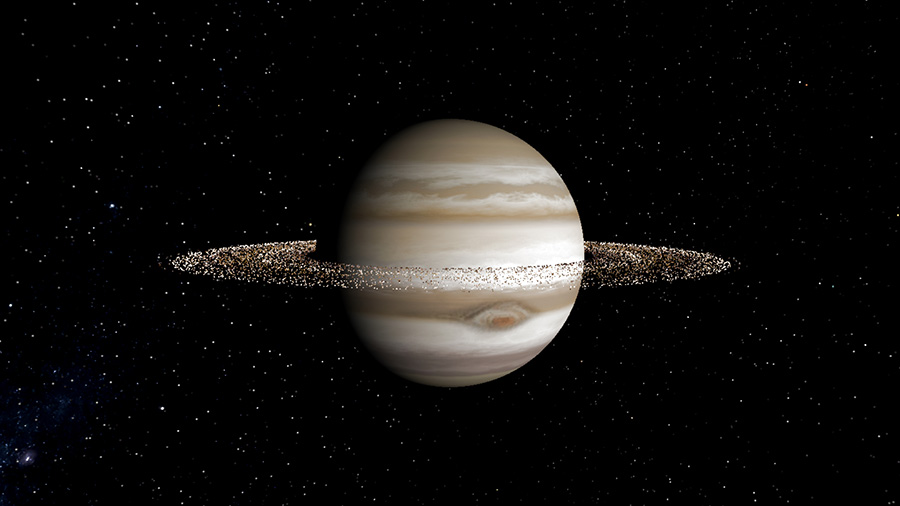Why does the biggest planet in the solar system have such flimsy rings? New research shows Jupiter’s moons may be to blame.

NASA / ESA / CSA / Judy Schmidt
Nature has given the biggest planet in the solar system an anemic set of rings. Saturn’s rings have been marked as one of the solar system’s splendors since the invention of the telescope, but no one even noticed Jupiter had its own much smaller set until the Voyager 1 spacecraft flew by on March 5, 1979.
Why should the rings of Saturn, which has a third of Jupiter’s mass, so outshine the feeble ones around the larger, more massive planet?

Kane & Li 2022
At least part of the answer may be that Jupiter's three innermost moons got in the way. A computer model of the Galilean satellites shows that the same gravitational resonance that keeps Io, Europa, and Ganymede in a 4:2:1 orbital lockstep also drains the equatorial orbits of the dust that could form rings.
"I always wondered why Saturn has these glorious rings," says Stephen Kane (University of California, Riverside). To find out why Jupiter’s rings don’t measure up, he and his student Zhexing Li (also at UCR) developed a computer model to see what effect Jupiter's four Galilean moons would have on a thick dust ring around the planet.
Rings are dynamic and their shape and size at a particular time depends on the mass of the planet they orbit and the history of the moons orbiting it. Inside a point called the Roche limit, the planet’s gravity dominates, preventing moons from forming and tearing apart any moons that drift too close; rings form there instead. Saturn's brightest rings lie within the Roche limit, as do most of Jupiter’s rings.
But rings can form outside the Roche limit, too, as they do around both Saturn and Jupiter. Here is where the gravitational pulls of moons play a role, Kane’s team contends.
The orbits of Jupiter’s three innermost large moons — Io, Europa, and Ganymede — are locked in a strong periodic resonance: Io orbits Jupiter four times and Europa orbits twice every time Ganymede circles the planet once. (The outermost Galilean moon, Callisto, became caught in a different resonance: It’s tidally locked so that it always faces the same side to Jupiter as it orbits, just like the same side of Earth's Moon always faces our planet.)
Kane’s computer model showed that the resonance between the inner moons would clear out any dust from Jupiter’s Roche limit out to 28 Jupiter radii from the planet’s cloudtops within a million years. Only a few ringlets would remain within that region, some between Ganymede’s and Callisto’s orbits and some near Callisto’s orbit. When Kane and Li extended their model to last 10 million years, the inner ringlets also disappeared.
Orbital resonances with Ganymede and Callisto would clear out material past 29 Jupiter radii — well past Callisto’s orbit — within tens of millions of years, the team reports in the Planetary Science Journal.

Stephen Kane / UCR
While Kane notes that the moons have little effect inside the Roche limit, it’s possible Jupiter's magnetic field, not considered in the model, could prevent material from gathering there.
For another point of comparison Kane wants to study Uranus. While nowhere near as bright as Saturn’s, its rings were the second to be observed among the giant planets and they’re thick enough to occult distant stars. Observers can use these occultations to measure the rings.
"We don't understand [Uranus's] dynamic history," Kane notes; that’s because it’s tipped on its side, with its equator perpendicular to its orbit, perhaps due to a massive collision long ago. Nevertheless, studying Uranus’s moons and rings could help test their theory. Searching exoplanets for rings could offer a more definitive test, but only with direct imaging, which is beyond current technology for all but the closest potential targets.
 0
0









Comments
You must be logged in to post a comment.